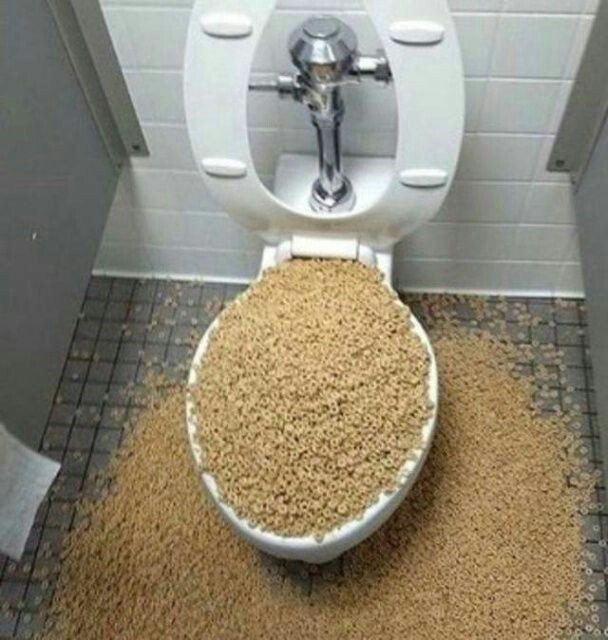Can One to Dispose of Food in the Toilet?
Can One to Dispose of Food in the Toilet?
Blog Article
How do you feel when it comes to Is it safe to flush food (especially rice) down the toilet??

Intro
Lots of people are typically confronted with the predicament of what to do with food waste, particularly when it pertains to leftovers or scraps. One usual concern that develops is whether it's alright to purge food down the bathroom. In this write-up, we'll delve into the reasons that people may take into consideration flushing food, the effects of doing so, and alternative methods for appropriate disposal.
Reasons people may consider flushing food
Lack of recognition
Some people may not recognize the possible harm caused by flushing food down the bathroom. They may mistakenly believe that it's a safe technique.
Ease
Purging food down the commode may appear like a fast and simple remedy to getting rid of undesirable scraps, specifically when there's no neighboring trash bin available.
Idleness
Sometimes, individuals might just choose to flush food out of sheer idleness, without taking into consideration the consequences of their actions.
Consequences of flushing food down the bathroom
Ecological impact
Food waste that winds up in rivers can contribute to air pollution and damage marine environments. Furthermore, the water utilized to purge food can stress water resources.
Plumbing issues
Purging food can result in clogged up pipelines and drains, causing expensive plumbing repair services and hassles.
Kinds of food that should not be purged
Coarse foods
Foods with coarse structures such as celery or corn husks can obtain tangled in pipelines and trigger obstructions.
Starchy foods
Starchy foods like pasta and rice can soak up water and swell, bring about blockages in pipes.
Oils and fats
Greasy foods like bacon or cooking oils should never be flushed down the bathroom as they can strengthen and create clogs.
Proper disposal approaches for food waste
Using a waste disposal unit
For homes furnished with waste disposal unit, food scraps can be ground up and flushed through the plumbing system. Nevertheless, not all foods are suitable for disposal in this manner.
Recycling
Specific food packaging materials can be recycled, decreasing waste and decreasing ecological impact.
Composting
Composting is an eco-friendly way to take care of food waste. Organic products can be composted and used to enhance dirt for gardening.
The value of correct waste monitoring
Lowering ecological harm
Appropriate waste monitoring techniques, such as composting and recycling, assistance minimize air pollution and maintain natural resources for future generations.
Safeguarding pipes systems
By staying clear of the technique of flushing food down the toilet, property owners can prevent pricey plumbing repair services and preserve the honesty of their pipes systems.
Final thought
Finally, while it may be tempting to purge food down the bathroom for benefit, it's important to understand the prospective consequences of this action. By embracing correct waste monitoring practices and disposing of food waste sensibly, individuals can contribute to healthier plumbing systems and a cleaner setting for all.
FLUSH FOOD DOWN THE TOILET?
FLUSHING FOOD CAN CAUSE BLOCKED DRAINS IN YOUR HOME
All of the plumbing fixtures in your home are connected to the same sewer pipe outside of your home. This outdoor sewer pipe is responsible for transporting all the wastewater from your home to the Council sewer mains. Even small pieces of food that go down the kitchen sink can cause problems for your sewer. It should therefore be obvious that flushing larger bits of food, such as meat, risks a clog in either the toilet itself or the sewer pipes. Flushing greasy food is even more problematic because oil coagulates when it cools, coating the interior lining of your pipes.
THE TOILET IS NOT A BIN
Food isn’t the only thing that people shouldn’t be flushing down the toilet. People use the toilet to dispose of all kinds of things such as tampons, makeup wipes, dental floss, kitty litter and even underwear. Water goes to great lengths to educate residents about the high costs and stress placed on wastewater treatment systems simply from people flushing the wrong stuff down the toilet. It costs taxpayers millions of dollars each year, and homeowners thousands in blocked drain repairs.
FLUSHING FOOD IS A WASTE OF WATER
Flushing food is a waste of our most precious resource - water. In June this year Level 1 water restrictions were introduced to protect water supply from drought conditions. Much of New South Wales continues to be affected by prolonged drought with recent figures revealing up to 97 per cent of the state remains in drought. Depending on whether you have a single or dual flush toilet, every single flush uses between five and 11 litres of water. In the current climate this is a huge amount of water to be wasting on flushing food that should be placed in the bin (or better yet, the compost).
https://www.jabplumbingsolutions.com.au/blog/can-you-flush-food-down-the-toilet

I'm certainly very interested by and I really hope you liked my post. So long as you appreciated our blog posting plz don't forget to pass it around. We treasure your readership.
Apply Now Report this page